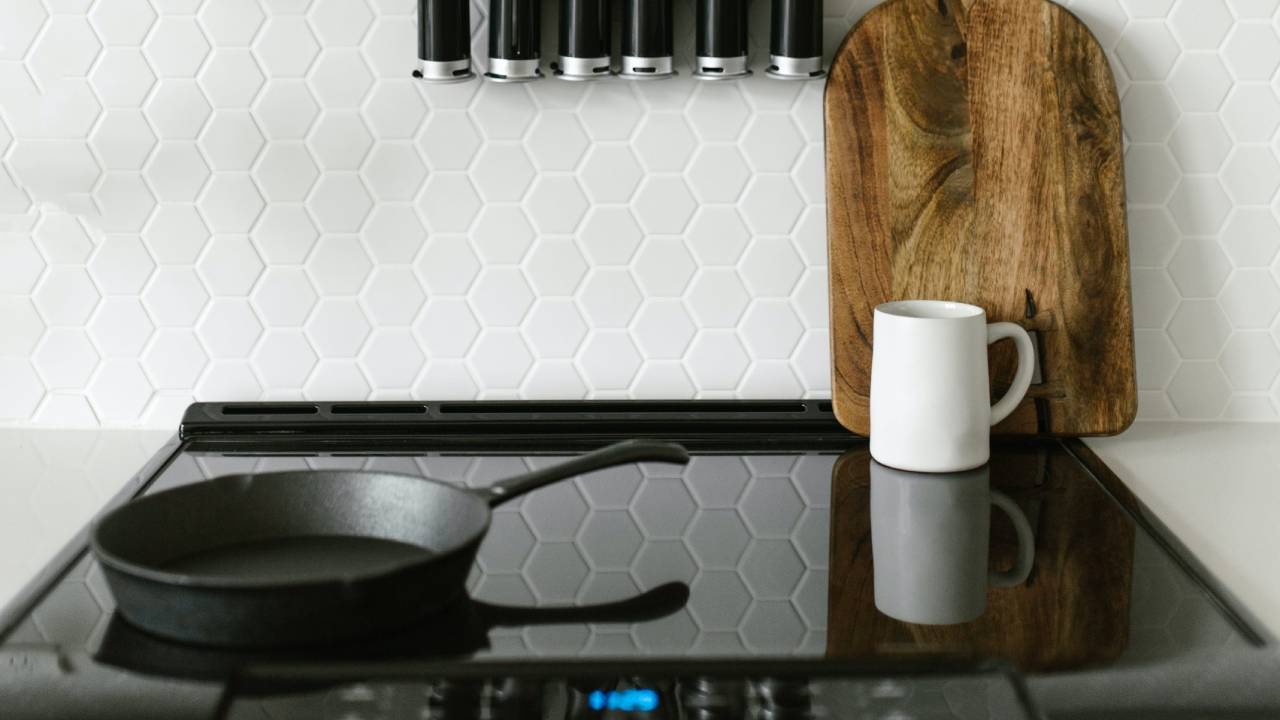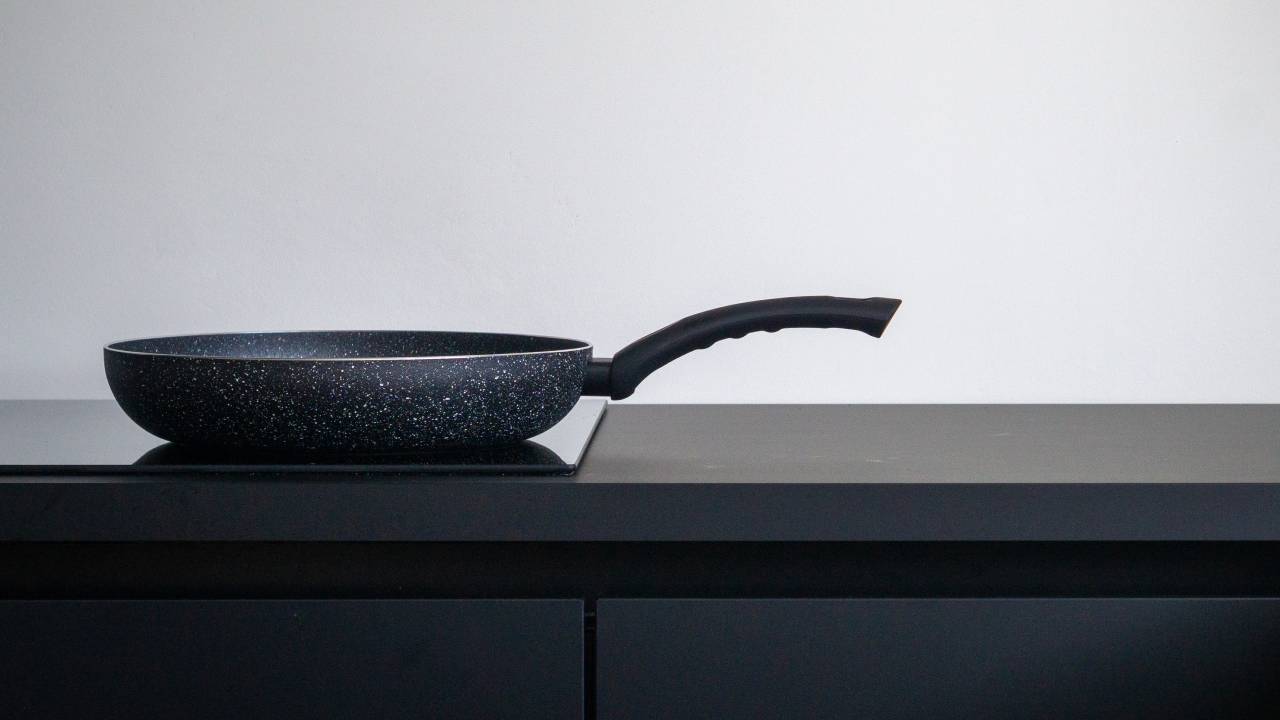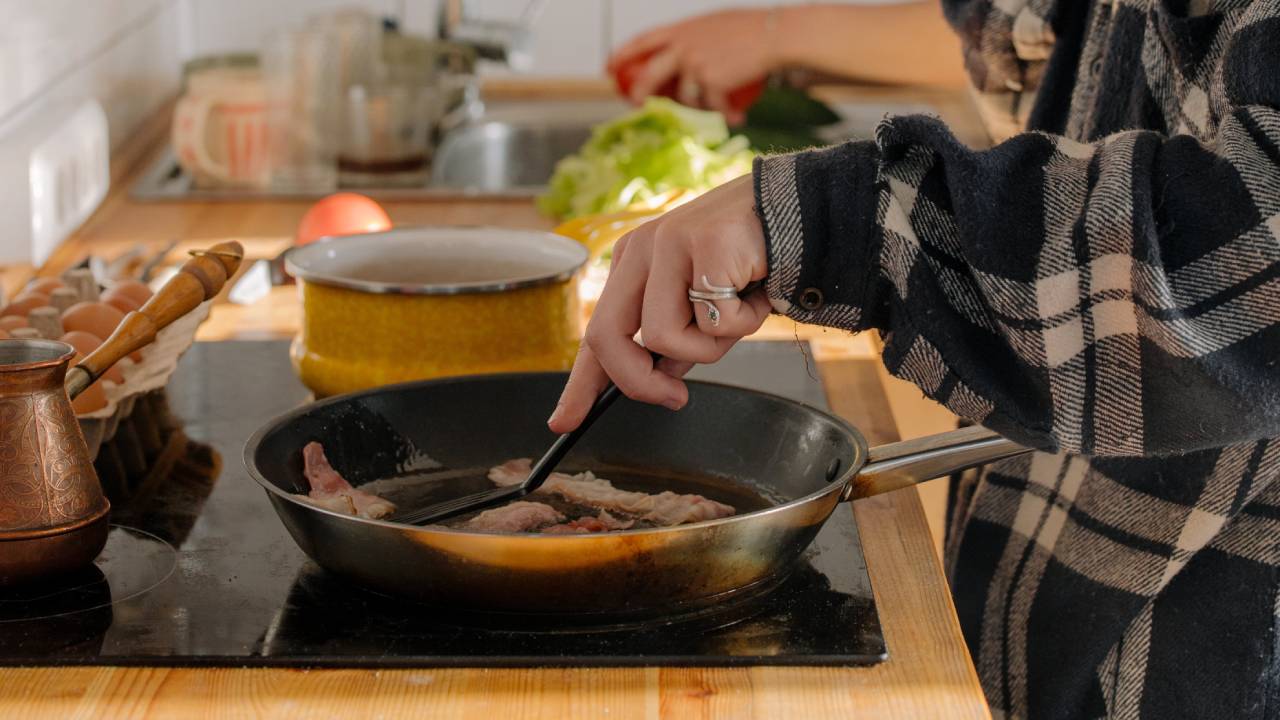7 mistakes everyone makes with induction hobs
From incompatible pans to the wrong heat, here’s how to avoid common induction hob mistakes


If you have one of the best induction hobs, you’ll know just how quick, energy-saving and convenient they are to cook your meals with. While there’s heavy debate around whether gas or electric cooking is better, induction hobs work by heating the pan directly for ultimate precision, and many people haven’t looked back since making the switch to an induction cooker.
When I moved into my house last year, I was excited to see the kitchen had an induction hob. The idea of accidentally leaving the gas on has always terrified me so having an induction cooker put my mind at ease. But, it’s not been easy transitioning to an induction hob and I’m still getting my head around it! The amount of times I’ve turned my back and my pasta water has boiled over is countless and I’ve gone from making the perfect poached eggs to accidentally hard boiling the yolk.
With all methods of cooking, it’s easy to make mistakes and if you’re not used to using an induction hob, you’ll definitely make a fair few before you’ve mastered the art of induction cooking. With this in mind, here are seven mistakes everyone makes with induction hobs and how to avoid them for easy, stress-free cooking.
P.S. Make sure to read ‘what is an induction hob and how does it work?’ so you can decide whether to invest in one or not.
1. Not checking if your pots and pans are compatible
One of the most common induction hob mistakes is forgetting to check if your pots and pans are compatible with the stovetop. I made this mistake when I moved into my house, where I bought a new saucepan set only to realise it didn’t work with the induction hob.
As induction hobs use magnetic fields to heat up pans, you’ll need cookware that’s suitable for this, otherwise the hob won’t work. To check if your pots and pans are compatible, hold a magnet to the bottom of it to see if it sticks. If it does, you can use your pan on an induction hob but if it doesn’t, you might need to donate it to a friend or family member (like I had to!). To avoid wasting money, choose stainless steel or cast iron cookware and steer clear of materials like aluminium, glass, ceramics and copper.
When choosing compatible pots and pans for your induction hob, it’s also important to consider the size. Cookware that’s too small or too big for the burner results in uneven cooking, and it’s also a waste of energy which can rack up your monthly bills.
Get all the latest news, reviews, deals and buying guides on gorgeous tech, home and active products from the T3 experts

2. Moving your pans around too much
Induction hobs have copper coils under the cooking surface and an alternating electric current passes through it to create a magnetic field. This field directly heats the pan rather than the hob’s surface, which is why it’s important to avoid moving your pans around too much when using an induction hob. Breaking contact with the hob indicates to the sensors that there isn’t anything on the surface. If the hob doesn’t detect cookware, it won’t heat up which means your food won’t get cooked. The surface of an induction hob is very sensitive so moving pans over it too vigorously can scratch or break it.
3. Using the wrong amount of heat
Something that took me a while to get used to is the heat that an induction hob gives off. It heats up quickly and precisely so it means you need to be quite accurate with the temperature when you’re cooking. When using an induction hob, it’s important to use the right amount of heat and adjust the heat settings accordingly so your food isn’t under or overcooked. Regardless of what you’re cooking, it’s recommended that you start on a lower heat setting and increase as you go to avoid burning your food.
4. Overusing the highest heat setting
Speaking of heat, it’s unlikely you’ll need to use the highest heat setting on a regular basis. As the temperature is so intensely hot, you’ll quickly and easily burn your food and even if you try to turn it down after it’s been on the highest setting, it’ll take longer to cool and continue to burn your meal. In general, it’s best to use the highest setting for boiling liquids, like water or stock. After the liquid has been brought up to boiling temperature, add your food and immediately adjust the heat. Letting the water continue to boil at this high temperature with food in it will also result in the water boiling over – a mistake I’ve made constantly with my own induction hob!
5. Resting hot trays on the surface
One of the great things about induction hobs is their sensitivity, so they’ll almost immediately detect that something is resting on them. When it’s not on, I use my induction hob as an extra surface where I place my ingredients but doing this, as well as resting hot trays on it when you take them out of the best oven isn’t a good idea. If your induction hob is still hot, it’ll continue to cook your food on the tray which will increase the likelihood of it burning. If you have an induction hob similar to mine, it’ll beep constantly to tell you that it’s still hot and that it’s got something on it, which is quite annoying when you’re trying to relax while eating your meal!

6. Ignoring the safety indicators
Depending on the induction hob you have, the display will most likely have the burner symbols, on/off button, timer and heat settings. While this simplicity is easy to overlook, it’s important to pay attention to what your induction hob is telling you to avoid overcooked food and accidental burns. During and post cooking, your induction hob will typically flash with the letter ‘H’, meaning it’s hot. The ‘H’ will continue to show up until it’s cooled down completely which can take a while compared to gas cookers. So, if you’ve finished your food and think you can use your induction hob as an additional worktop again, make sure to check if the safety indicator is still flashing so you don’t hurt yourself.
7. Not cleaning it properly
Like all appliances, it’s important to keep them clean. Most induction hobs have touch screens so aside from the obvious food stains, your hob will also pick up finger smudges. Aside from hygienic reasons, if it’s not properly cleaned and maintained, your induction hob won’t be as responsive when you try to turn it on and adjust its settings. Induction hobs are easy to clean but it’s important to wipe them down using soft cleaning supplies, as anything too abrasive can scratch the surface. Use soft cloths and mild detergents to clean up any mess and avoid scrubbing so you don’t damage the induction hob or remove any markings.

Beth is Home Editor for T3, looking after style, living and wellness. From the comfiest mattresses to strange things you can cook in an air fryer, Beth covers sleep, smart home, coffee machines, watches, grooming tools, fragrances, gardening and more.
In her spare time, Beth enjoys running, reading, baking and attempting craft projects that will probably end in disaster!